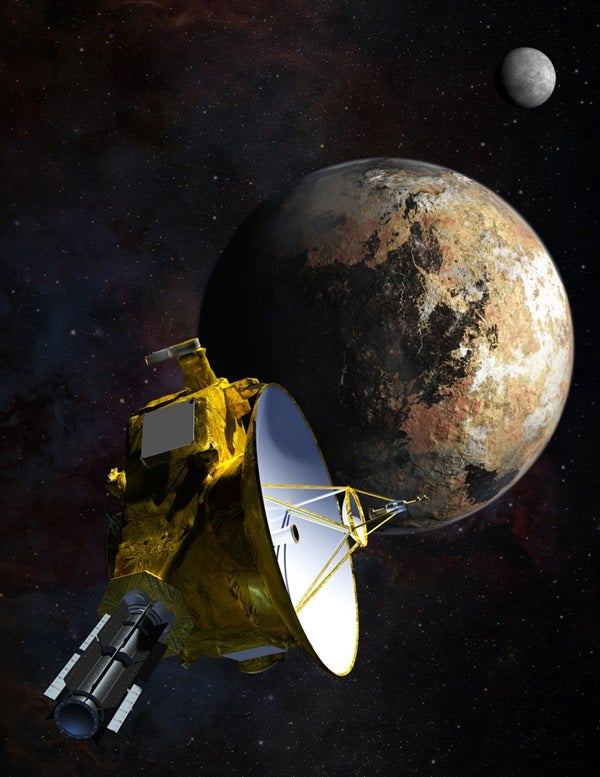Eighty-five years after American astronomer Clyde Tombaugh discovered Pluto, planetary scientists eagerly await their first close-up views of this enigmatic world. From Earth, the distant planet spans barely 0.1 arcsecond — at the limit of resolution even with the mighty Hubble Space Telescope. It’s no wonder that our knowledge of Pluto has come in fits and starts, gained through painstaking observations that stretch the latest technology to its limits.
Fortunately, 21st-century technology has reached the point where humans can send a robotic emissary to observe Pluto and its family of diverse moons in exquisite detail. NASA launched New Horizons on a fast track to Pluto on January 19, 2006. Its 9.5-year journey culminates July 14, when the sophisticated probe skims just 7,770 miles (12,500 kilometers) from the planet’s surface and about twice as far from its largest moon, Charon. Principal Investigator S. Alan Stern described the intricate maneuvers and detailed operations the spacecraft will perform during this historic encounter in “NASA sets its sights on Pluto,” from the February 2015 Astronomy.










